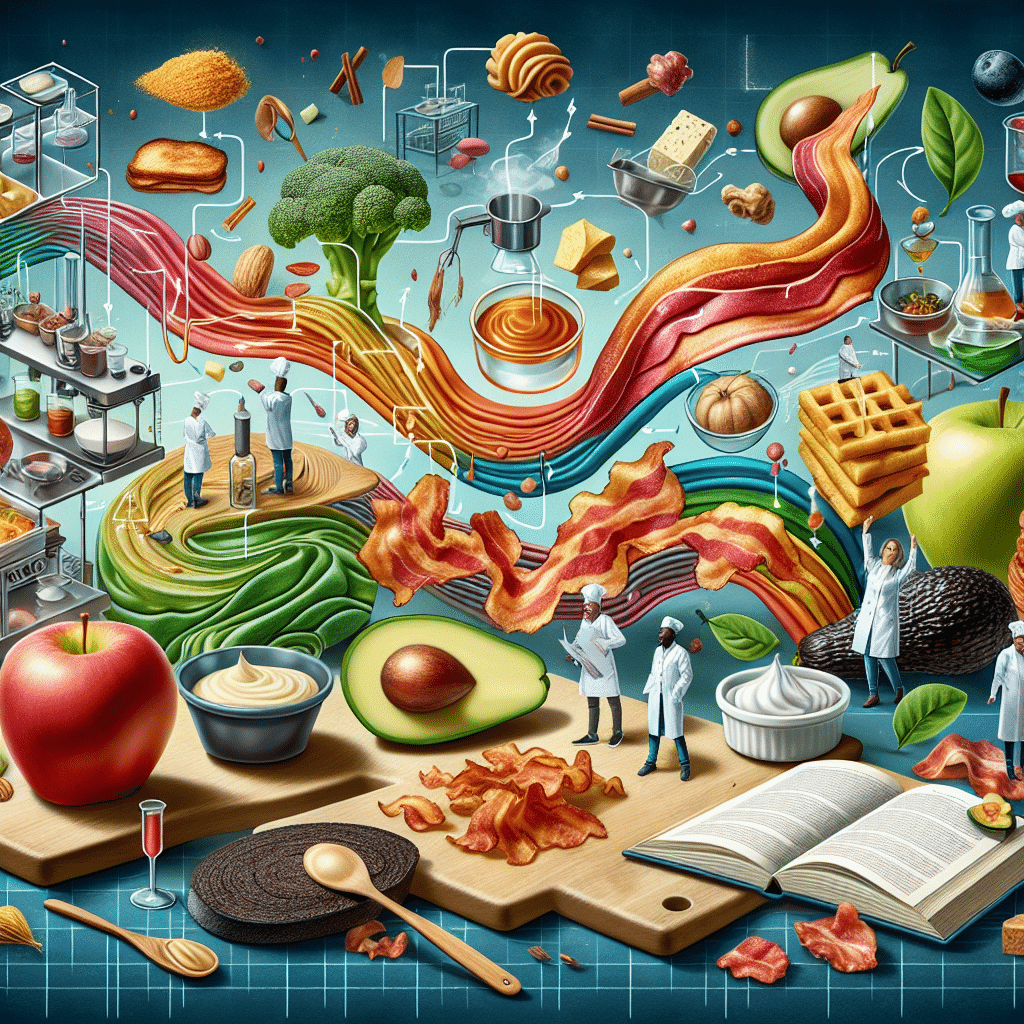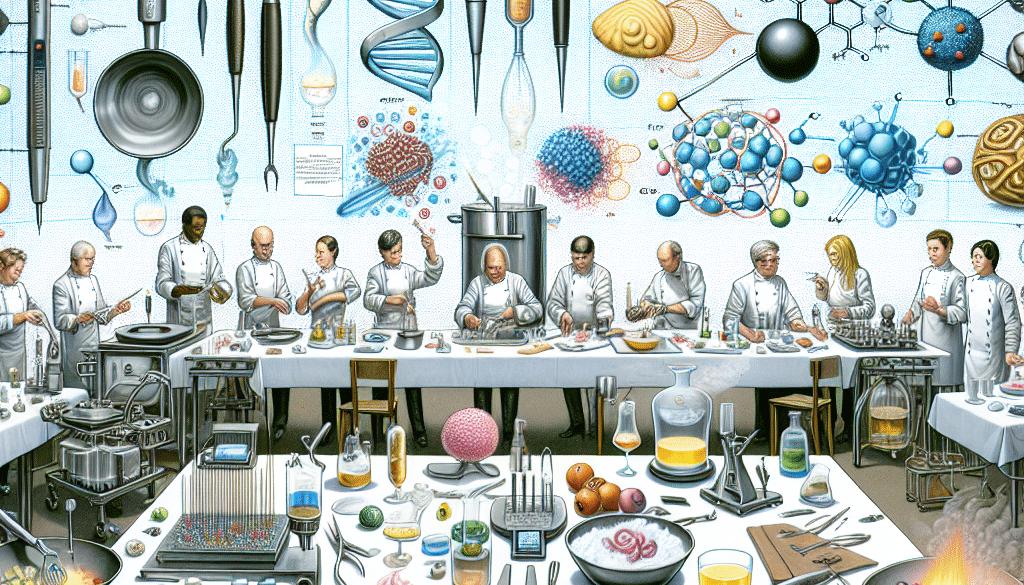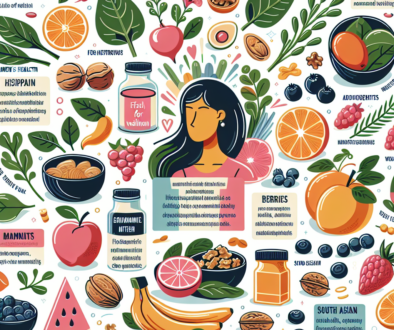Food Texture Science: The Subtle Art of Culinary Appeal
-
Table of Contents
- Food Texture Science: Crafting Culinary Appeal
- Understanding the Role of Texture in Food Science
- The Science Behind Texture Perception
- Texture’s Impact on Flavor Release and Perception
- Case Studies: Successful Textural Innovations in the Culinary World
- Techniques for Manipulating Food Texture
- Statistical Insights into Consumer Preferences
- Conclusion: The Significance of Texture in Culinary Success
- Discover ETChem’s Protein Products for Enhanced Food Texture
Food Texture Science: Crafting Culinary Appeal

The art of cooking extends far beyond flavor. It’s a multisensory experience where the texture plays a pivotal role in how we perceive and enjoy our food. Food texture science is an intricate field that delves into the physical sensations derived from the structural properties of food. It’s a subtle art that can make or break a culinary creation, influencing our satisfaction and even our nutritional intake.
Understanding the Role of Texture in Food Science
Texture is a critical component of our eating experience. It affects our perception of food quality and can influence our eating habits. The crunch of a fresh apple, the creaminess of a mousse, or the chewiness of a well-cooked steak all contribute to our enjoyment of these foods. Food scientists study the physical properties of food, such as hardness, cohesiveness, adhesiveness, viscosity, and elasticity, to understand how these factors interact with our sensory receptors.
The Science Behind Texture Perception
Our perception of texture is a complex process that involves various sensory inputs. When we eat, our sense of touch, sound, and even sight come into play. The tactile experience includes the mouthfeel, which is how the food feels inside our mouths, and the mechanical aspect, which is how the food responds to the forces we apply, such as biting and chewing. The sound of food, like the crunch of a chip, also contributes to our perception of texture. Even the visual appearance of food can set expectations for its texture.
Texture’s Impact on Flavor Release and Perception
Texture not only stands on its own but also affects how we perceive flavors. The rate at which food breaks down in the mouth can alter the release of volatile compounds responsible for flavor. For example, a firm texture may slow down the release of flavors, prolonging the taste experience, while a soft or liquid texture might result in a quick burst of flavor.
Case Studies: Successful Textural Innovations in the Culinary World
Many food companies have leveraged texture to create unique and appealing products. For instance, the airy yet crispy nature of aerated chocolate bars creates a novel eating experience that has become popular worldwide. Similarly, the development of plant-based meat alternatives focuses heavily on replicating the fibrous texture of meat to satisfy both vegetarians and meat-eaters.
Techniques for Manipulating Food Texture
- Emulsification: The process of combining two immiscible liquids, like oil and water, to create a smooth texture.
- Gelation: Using gelling agents to transform liquids into gels, providing a range of textures from soft to firm.
- Fermentation: A biochemical reaction that can alter the texture of food, making it softer or developing a chewy consistency.
- Extrusion: A technique used in the production of pasta, snacks, and cereals to create specific textures by forcing material through a shaped opening.
Statistical Insights into Consumer Preferences
Consumer preferences have shown a significant interest in texture, with studies indicating that texture claims on packaging can influence buying decisions. According to market research, products highlighting textural elements like “crunchy” or “smooth” can see increased sales, emphasizing the importance of texture in product development.
Conclusion: The Significance of Texture in Culinary Success
In conclusion, the science of food texture is an essential aspect of culinary appeal. It’s a subtle art that requires a deep understanding of how physical properties interact with our senses. By mastering this art, chefs and food manufacturers can create memorable and enjoyable eating experiences that keep consumers coming back for more.
Discover ETChem’s Protein Products for Enhanced Food Texture
ETChem’s range of protein products, including various types of collagen, can significantly enhance the texture of food and beverage products. Their high-quality collagens are perfect for creating the desired mouthfeel and consistency in a variety of applications, from baked goods to beverages. With ETChem’s protein solutions, you can achieve the perfect balance of texture and flavor in your culinary creations.
About ETChem:
ETChem, a reputable Chinese Collagen factory manufacturer and supplier, is renowned for producing, stocking, exporting, and delivering the highest quality collagens. They include marine collagen, fish collagen, bovine collagen, chicken collagen, type I collagen, type II collagen and type III collagen etc. Their offerings, characterized by a neutral taste, instant solubility attributes, cater to a diverse range of industries. They serve nutraceutical, pharmaceutical, cosmeceutical, veterinary, as well as food and beverage finished product distributors, traders, and manufacturers across Europe, USA, Canada, Australia, Thailand, Japan, Korea, Brazil, and Chile, among others.
ETChem specialization includes exporting and delivering tailor-made collagen powder and finished collagen nutritional supplements. Their extensive product range covers sectors like Food and Beverage, Sports Nutrition, Weight Management, Dietary Supplements, Health and Wellness Products, ensuring comprehensive solutions to meet all your protein needs.
As a trusted company by leading global food and beverage brands and Fortune 500 companies, ETChem reinforces China’s reputation in the global arena. For more information or to sample their products, please contact them and email karen(at)et-chem.com today.




